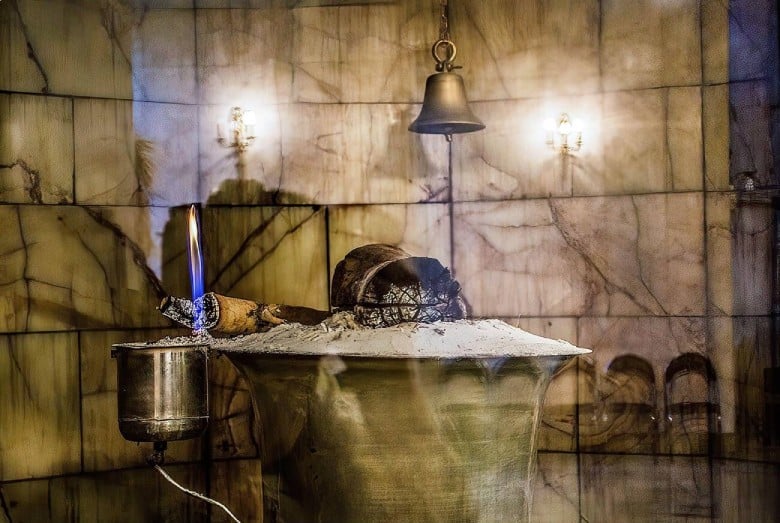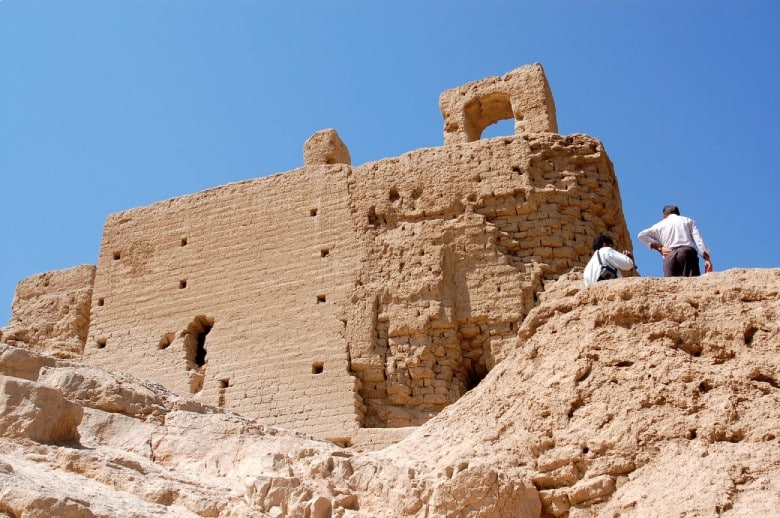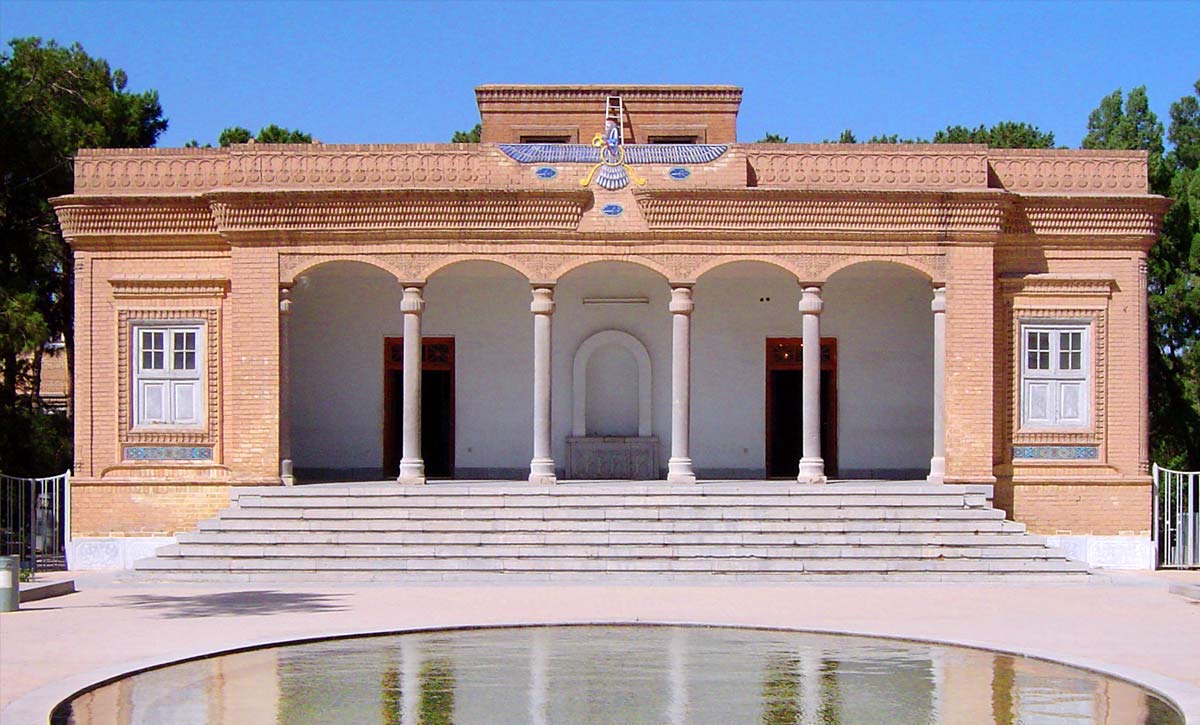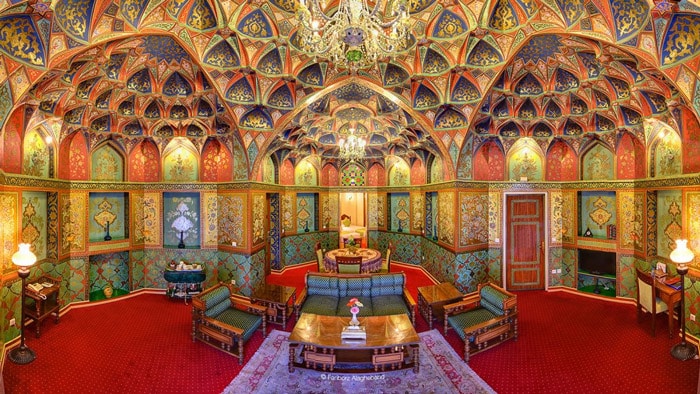Fire Temple of Isfahan: Atashgah-e Isfahan
A Must-See Destination for History Enthusiasts

If Yazd is the most famous cities of Iran for Zoroastrianism, Isfahan is not outdone. Atashgah-e Isfahan is an ancient Zoroastrian Fire Temple located in the west of the city and is considered as one of the greatest Fire Temple of the Sassanid Era.
Contents
What is Isfahan Fire Temple?

Fire Temples are among the most important places of worship in Zoroastrianism, the world’s first monotheist faith, which was once the religion of the Persians kings. Founded in Persia by Zarathustra (also called Zoroaster) over 3500 years ago, Zoroastrianism emerged from the polytheistic faith of the time, proclaiming Ahura Mazda as the one true God, and other deities as mere emanations from him.
In Atashgah-e Isfahan, like is all Fire Temples across Iran and the world, was kept a fire, which is one of the sacred elements of Zoroastrianism along with water. This fire was meant to burn perpetually, most of which have been ignited centuries ago, and is a symbol of Ahura Mazda’s power and the immortality of the soul.
The Fire, A Sacred Element for Zoroastrians

According to Zoroastrianism belief, fire and water are agents of ritual purity. The eternal flame of the Zoroastrian fire is perceived as a physical manifestation of Atar, the God of Fire, himself an emanation of Ahura Mazda. As an extension, the eternal fire symbolizes the divine, and its perpetual movement mirrors the eternal existence of the soul.
Fire has always been a major element in the ancient Persian religions. Not only would it provide heat and light, but it has been perceived as an instrument to determine the guilt or innocence of someone, and thus, as a symbol leading toward righteousness.
In the past, people accused of legal matters were judged through the Ordeal by Fire. For instance, one may be forced to walk into the fire or to endure hot metal poured onto his chest, in order to determine his guilt or innocence. Guilt was proven by death; and the one who would survive would be considered protected by Atar, and thus, innocent.
Within the temple, the fire is kept in specific conditions, to ensure it won’t be contaminated by other elements. Blowing on the fire is forbidden, and worshippers should cover their mouth with a mouthpiece when praying near the fire, so their breath would not contaminate the sacred fire.
A Brief History of Isfahan Fire Temple

Isfahan Fire Temple is the largest and most ancient temple from the Sassanid Era. Built on top of a bill, some historical evidences suggest that the Fire Temple was originally a castle, called Marbin Castle, inside which was later built the Fire Temple.
While there is no mention of Fire Temples in the Avesta, the Zoroastrian scripture, the beginning date of this ritual is still unknown. While there are references to honoring God through fire, some believe that the practice originated from the ritual of keeping a burning fire during the entire life of a household.
While the first Fire Temples were built outdoors, such as the one in Isfahan, they gradually appeared within enclosures during the Achaemenid Empire. The oldest documented Fire Temple found in Iran dates back to 200 BC, during the Parthian Era when many Fire Temples were established. The most sophisticated Fire Temples were built under the Sassanian Empire, but with the fall of the dynasty and the Arab Invasion, many Fire Temples were destroyed or turned into mosques. It is said that during that period of time, some flames were kept in secret locations, and later used in Fire Temples, most of which would be located in India.
Architecture of Isfahan Fire Temple

Isfahan Fire Temple was a five-story structure, which only two levels are remaining. The whole complex was built of mud-bricks, lime and reeds, on top of a high hill around a podium known as “Chahar Taqi” (litteraly, “four arches”). It is a large circular structure with a dome that was surrounding the altar of the sacred fire.
Another notable feature of the complex is the remaining of a tower. This circular building with eight windows was once 20-meter high and is called Burj-e Gurban, literally the tower of sacrifices. It may have been a military watchtower when the place was used as a castle. Surrounding the complex are other remains that indicates the place was used by priests and pilgrims.
While each Fire Temple is different from the other, they generally all share similar architectural features and are most of the time quadrangular buildings, opened on each side by four arched gates. Their main hall is covered with a dome and has corridors running around it.
While the fire was at first kept in the central area, it was gradually displaced to the corridors around it, usually in a separate dark room. This was done to protect the fire from the sunlight, and from the risk of being contaminated by other elements. In Fire Temples, only priests are allowed to take care of the sacred fire and worshippers cannot enter the room.
Access to Isfahan Fire Temple

Isfahan Fire Temple is located about 10 kilometers west of Isfahan’s city center. The complex is located on an 86-meter hill outside of Isfahan. The best way to reach the Fire Temple is by taxi and the entrance is free.
Other Fire Temples in the World and in Iran

There are currently 167 Fire Temples in the world, located in 18 different countries, most of which are in India. Among these 167 Fire Temples, only nine of them are considered “Atash Behrams”, which is a temple hosting the highest grade of fire.
While there used to be a large number of worshippers and places of worship in Persia, many people converted to Islam after the Arab Invasion, and Fire Temples were either left unattended or turned into mosques.
In Iran, the only Atash Behrams is the Fire Temple of Yazd, one of the best examples of Fire Temples in Iran. It’s one of the most significant Zoroastrian places in the country. It is believed that the fire it hosts has been burning since 1500 years ago.

There are other important Fire Temples in Iran, one of which is Azar Goshnasb, considered the largest in Iran. It is located on the historical sites of Takht-e Soleiman (UNESCO), next to a vast lake, and would be 3000 years old. During the Sassanid Era, this temple was one of the most important Zoroastrian sites and some sources mention King Khosrow as its founder. Another important Fire Temple remaining in Iran is located in the city of Sabzevar, in Khorassan, and called Azar Barzin. The temple would have been built during the time of Zoroaster and is mentioned in the Shahnameh. There can also be found other temples in other Iranian provinces such as Tehran, Khuzestan, and Sistan and Baloochistan.




